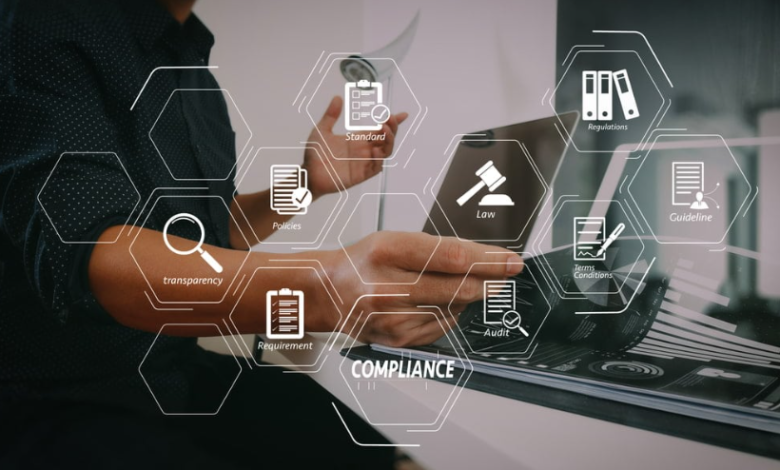Strengthen Company Security via Expert Compliance

Is your company truly secure? Many businesses focus on digital threats like hackers and data breaches, investing heavily in firewalls and cybersecurity software. While these are essential, they often overlook a critical internal vulnerability: legal and regulatory compliance. Failing to meet these standards can expose your organization to significant risks, including financial penalties, reputational damage, and operational disruption. Expert compliance isn’t just about following rules; it’s a powerful strategy for strengthening your company’s overall security.
Understanding the complex web of regulations that govern your industry is a full-time job. From data privacy laws like GDPR and CCPA to industry-specific mandates, the compliance landscape is constantly shifting. A single misstep can lead to severe consequences. This is where expert guidance becomes invaluable. By partnering with compliance professionals, you can build a robust framework that not only protects you from legal trouble but also fortifies your business against a wide range of threats. This post will explore how expert compliance acts as a cornerstone of corporate security and provides actionable steps to integrate it into your operations.
Why Compliance Is a Security Issue
Thinking of compliance as just a legal checkbox is a common but dangerous mistake. Strong compliance practices are fundamentally intertwined with your company’s security posture. Here’s how they connect and why neglecting one weakens the other.
Protecting Sensitive Data
Data is one of the most valuable assets for any modern business. Compliance regulations like the Health Insurance Portability and Accountability Act (HIPAA) for healthcare or the General Data Protection Regulation (GDPR) for businesses handling EU citizen data are designed to protect this information. These laws mandate specific security measures, such as encryption, access controls, and regular risk assessments.
By adhering to these standards, you are not just avoiding fines; you are actively implementing a security system that defends against data breaches. Expert compliance ensures these controls are correctly implemented and consistently maintained, closing security gaps that could otherwise be exploited by malicious actors.
Preventing Insider Threats
Not all security threats come from the outside. Insider threats, whether intentional or accidental, can be just as damaging. Clear, well-enforced internal policies—a key component of any compliance program—are your first line of defense. These policies define acceptable use of company resources, data handling procedures, and the consequences for violations.
When employees understand the rules and the reasons behind them, they are less likely to make careless errors that expose the company to risk. For example, a compliance-driven training program can educate staff on how to spot phishing emails, reducing the likelihood of a successful cyberattack.
Maintaining Business Continuity
What happens if a key system fails or a natural disaster strikes? A strong compliance framework often includes requirements for business continuity and disaster recovery planning. These plans outline the procedures to keep essential functions running during a crisis and to recover operations afterward. By having these protocols in place, you ensure your business can withstand unexpected disruptions, protecting your revenue, customer relationships, and overall stability.
See also: Tech innovations transforming logistics and risk management
Steps to Build a Stronger Compliance Framework
Integrating expert compliance into your security strategy doesn’t have to be overwhelming. You can take several practical steps to build a resilient framework that protects your business from multiple angles.
Conduct a Comprehensive Risk Assessment
You can’t protect against risks you don’t know exist. Start by conducting a thorough risk assessment to identify potential compliance and security vulnerabilities across your organization. This should cover everything from your IT infrastructure and data storage practices to your employee training protocols and third-party vendor relationships. An expert can help guide this process, ensuring you don’t miss any critical areas.
Develop and Document Clear Policies
Once you understand your risks, create clear, written policies that address them. These policies should be easy for all employees to understand and access. They should cover key areas like data privacy, information security, acceptable use of technology, and incident response. Documenting these procedures is crucial for consistency and provides a clear standard for everyone to follow.
Invest in Regular Employee Training
Your employees are a critical part of your security and compliance efforts. Regular training ensures they are aware of the policies and understand their role in upholding them. Training should be ongoing and adapt to new threats and regulations as they emerge. Interactive sessions, real-world examples, and phishing simulations can make the training more engaging and effective. In situations requiring specific legal expertise, such as needing a restraining order lawyer in Jacksonville for a workplace safety issue, having clear internal protocols will guide your response.
Monitor and Audit Your Program
Compliance is not a one-time project; it requires continuous monitoring and improvement. Regularly audit your program to ensure policies are being followed and that they remain effective against new threats. These audits can help you identify weaknesses and make necessary adjustments before a serious incident occurs. Technology can aid this process, with tools that monitor for compliance deviations and alert you to potential issues in real-time.
Fortify Your Business from the Inside Out
In the end, building a secure company requires a holistic approach. While firewalls and antivirus software are important, they are only part of the solution. True security comes from a culture of awareness and responsibility, supported by a robust compliance framework. By treating compliance as a strategic pillar of your security program, you protect your business not only from legal penalties but also from the operational and reputational damage that can arise from a security breach.
Don’t wait for an incident to expose your vulnerabilities. Take proactive steps today to integrate expert compliance into your security strategy. Assess your risks, develop clear policies, train your employees, and continuously monitor your program to ensure your business is protected from all angles.



